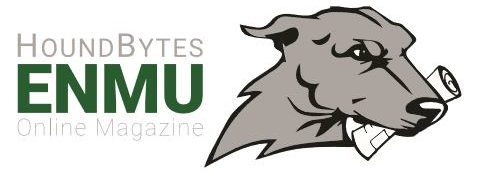By: Wayne Head
I want to share a thumbnail sketch of five men, all related to each other. I do not talk about their education levels, deepest secrets, strongest life challenges, political affiliation, or spiritual beliefs. I have recently been thinking about the very narrow labels that too many people are putting on each other based on simple statements, political affiliations, religion and race. I look very much like the 90 percent European ancestry that makes up much of who I am. Most casual observers would not guess the rest of my family’s history.
In April, I will have been a social worker for 37 years. Most of my practice has been in the state of New Mexico. In three states and four counties in New Mexico, I was a Child Protective Services social worker. I have been a school social worker with the Clovis Municipal Schools for the past 22 years. In my junior year of high school, I decided that I wanted to help Native American people, people like my paternal grandfather. I had never met a social worker and did not know exactly what it was that they did in their profession. I did know that social workers helped people, and from this, I decided to become a social worker.
My father, George Jeston Head Jr., was an ammunition inspector, also referred to as a Quasus (quality assurance) for the U.S. Department of Defense for about 28 years. Prior to that, he had been a Marine for three years loading bombs onto aircraft. His overseas tours included Japan, Livorno, Italy, Kaiserslautern, Germany, Cambodia and Laos, and South Korea. He flew with Air America in Laos at least once. Air America was the air service for the Central Intelligence Agency during the Vietnam War. My father and mother were struggling financially raising my younger brother and me when my father went to the Navajo Army Ammunition Depot near Flagstaff, Arizona. He was going there to apply for a job as a security guard when a man asked if he had worked with bombs in the Marine Corps. My father told him that this was true, and the man suggested that he apply for a job as an ammunition inspector. After two years of training in Savanna, Illinois, he was an ammunition inspector headed to his first assignment in Livorno, Italy.
My father’s father, George Jeston Head Sr., raised six children on his own. He was a working man the majority of his life. When he was thirteen his father sent him from Farmington, New Mexico to the Fort Lewis Indian Boarding School near Hay Gulch, Colorado. My grandfather had heard of the harsh conditions at the boarding school from his older siblings who were sent there for high school educations. Somewhere on the trip north, he jumped off the wagon and ran back to his home. His father told him if you are going to make decisions like a man then you will work like a man. He gave my grandfather a wagon and a team of horses and sent him to haul hay from Cedar Hill, New Mexico north of Aztec, New Mexico.
He was a firefighter on the Cumbres and Toltec Railway as a young man. In his late twenties, he worked with his eldest brother, Heber Head, as an ironworker. He once saved a man’s life by wrapping a rope around the man’s torso as he was falling several stories above where my grandfather and his boss were sitting on a girder taking their lunch. He worked the rest of his career as a cement finisher. He learned to speak the Navajo language and was sometimes employed by the San Juan County Sheriff’s Office to interpret for them. There were times when he could not afford a used pickup truck, so he would walk miles to work, then work all day and walk home. He was one of the hundreds of workers who built Boulder Dam, and then later he returned to the re-named Hoover Dam for additional work.
His family lived uphill from Lake Mead in McKeeversville, a tent city, while he worked on the dam. During World War II, he proved that he was a Native American, and he received his birth certificate, attested to by his father-in-law. These documents allowed him to work as a cement finisher near Hanford, Washington helping build the Manhattan Project. The Hanford Engineer Works was created to make stockpiles of plutonium. Grandpa later told my father that after the buildings were constructed he stayed on to work in one of the units for a few months. When President Nixon resigned the presidency and President Ford took office, my grandfather was concerned that we were headed for another nationwide depression. He told me, “Wayne, I think we are headed for hard times.” He thought a moment then said, “Well my whole life has been hard times, I should be okay.”
My grandfather’s father was Pinckney Henry Head, the only child of Robert Head and Sarah Ann Louise Evans Head. His parents were Catawba Indians born and raised on the Catawba Indian Nation near Rock Hill, South Carolina. Robert Head enlisted in a South Carolina company in the Confederate States of America and died at the age of 21 in 1863. Sarah raised her son by herself and married her husband’s first cousin, Alex Timms, when Pinckney was 20 years old.
Native Americans were considered colored people and were denied the ability to work for a white man or white owned businesses. Most Catawba men earned their livelihood by fishing, hunting, farming and leasing their land for timber cutting. Many members of the tribe were impoverished and remained so due to the racist policies and practices of the time. My grandfather’s sisters always told me that their father was an educated man. They had no idea where he learned to read and write but they were sure that he had gone to a school as a child. Most Native American children during the 1870s and 1880s that received an education did so in Indian Boarding Schools. It is possible that he attended a boarding school with the Cherokee Indian citizens in North Carolina.
Some Catawba citizens later attended the Carlisle Indian Industrial School, near Carlisle, Pennsylvania. This school operated from 1879 to 1918 and housed Native American children from all over the nation. I have copies of letters that Pinckney wrote to congressional representatives, President Franklin Roosevelt, an attorney, and Native American focused associations to lobby for treaty rights for the Catawba Indian Nation. These letters are well written and cogent in content. Pinckney left the Catawba Indian Nation with the help of the Church of Jesus Christ of Latter Day Saints, with his family and four related families. They left racism, limited personal possibilities, and deep poverty. In Sandford, Colorado, he was able to buy two farms in the 17 years that he lived there. He sold these farms and was allotted two parcels of land, each measuring 160 acres through the Dawes Indian Land Grant Act. The home acreage straddled the San Juan River near Farmington, New Mexico. He also was the co-owner of the first dairy in Farmington, New Mexico.
Pinckney’s father was Robert Head, a citizen of the Catawba Indian Nation. We do not know who his father was, just his last name. Robert was married to Sarah Ann Louise Evans who was also a citizen of the Catawba Indian Nation. Robert joined his cousins in the ranks of the Confederate Army. While in the service, he received word that his wife was pregnant with his only child. He asked permission for a leave of absence, which was denied. He left his unit and made his way home on his own. We do not know where he was stationed at the time, but we do know that he was later discharged from a hospital with severe dysentery in Virginia. Once in South Carolina, he saw his only child and stayed with his family for a little while. He then returned to his unit and was not punished for being AWOL, away without leave. The family story is that he died but not by a bullet. The socio-economic conditions for Robert and his peers were the same as they were for his son 24 years later. Service in the military might have been preferable to the poverty that he faced daily. We know very little about Robert Head but we do have a photo of him in his Confederate Uniform.
These stories are of five men, five men who had mothers, grandparents, uncles, aunts, siblings, cousins, nieces and nephews, all of whom had their own unique stories of challenges and accomplishments. My highlighting of my paternal male ancestors and myself is not meant to discredit these other relatives. I did this to show a simple slice of a very American story.

